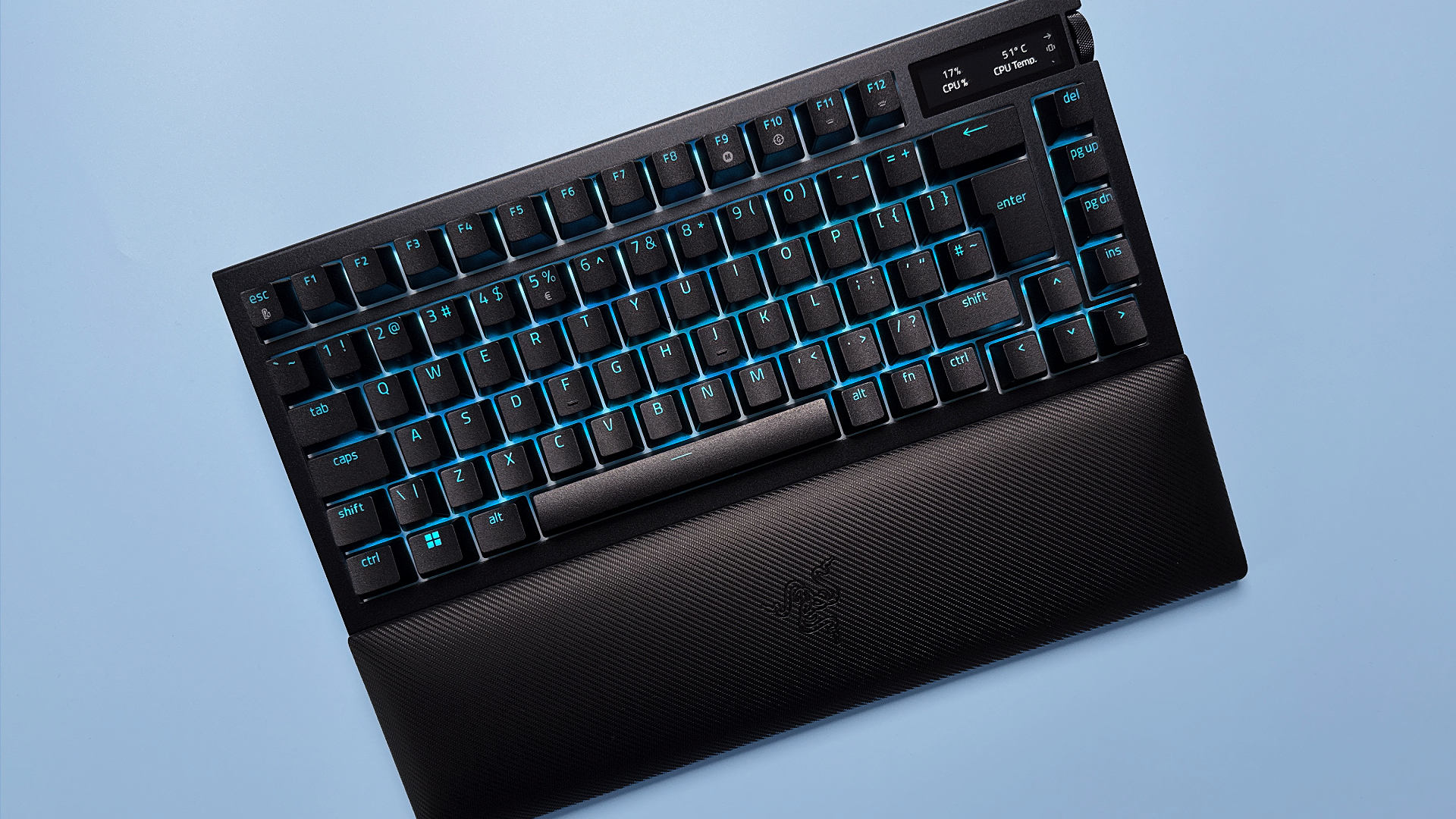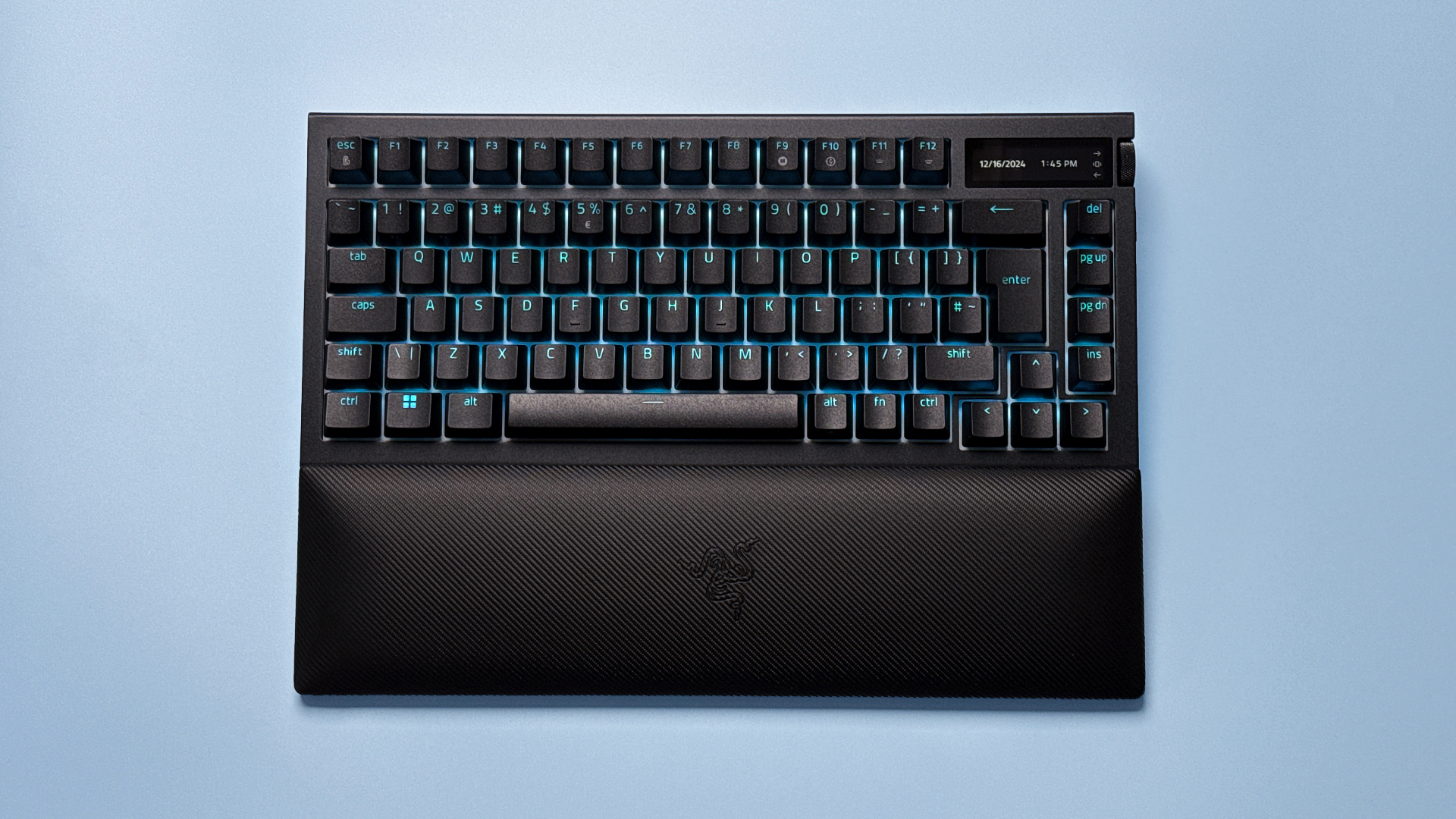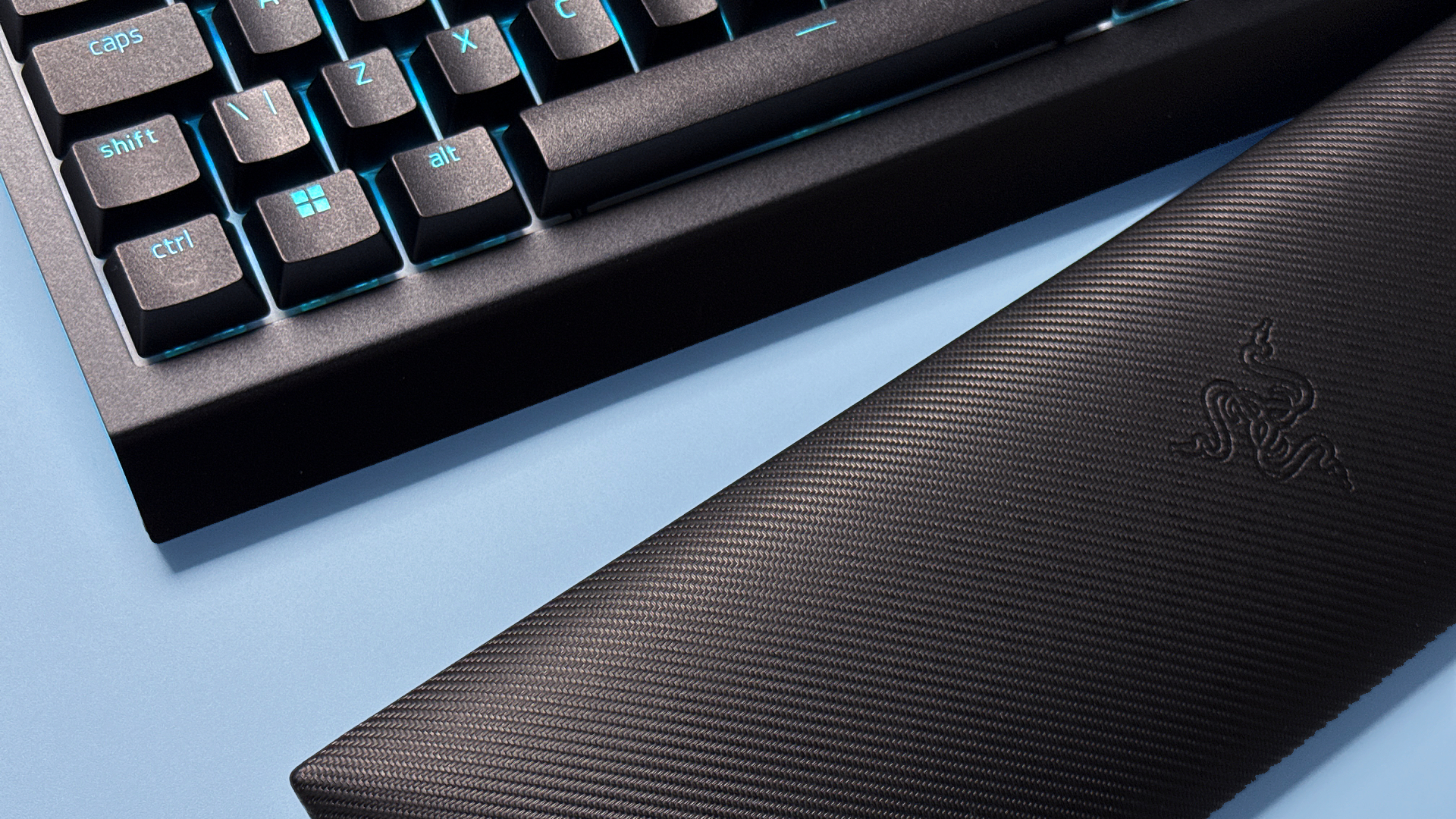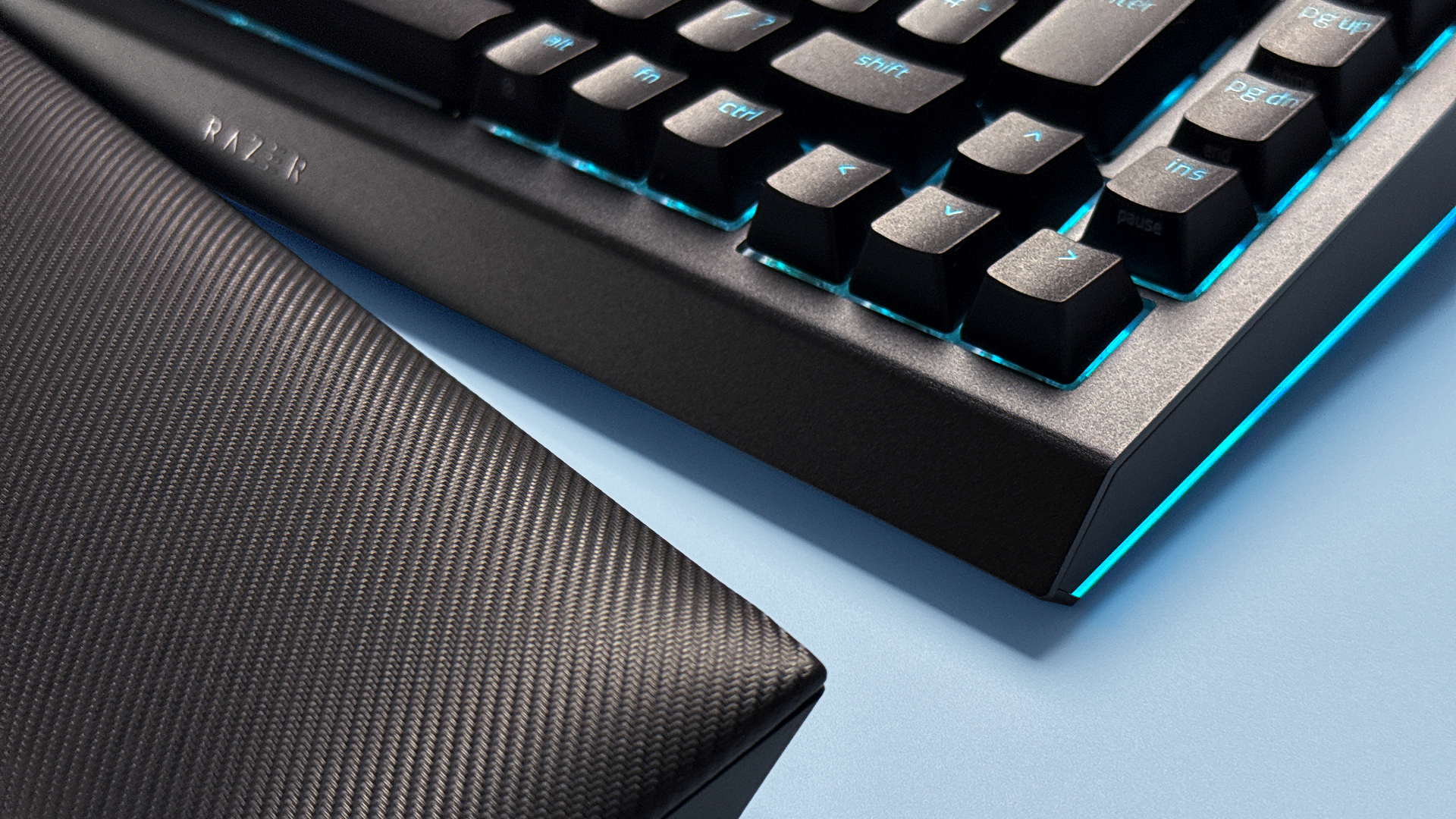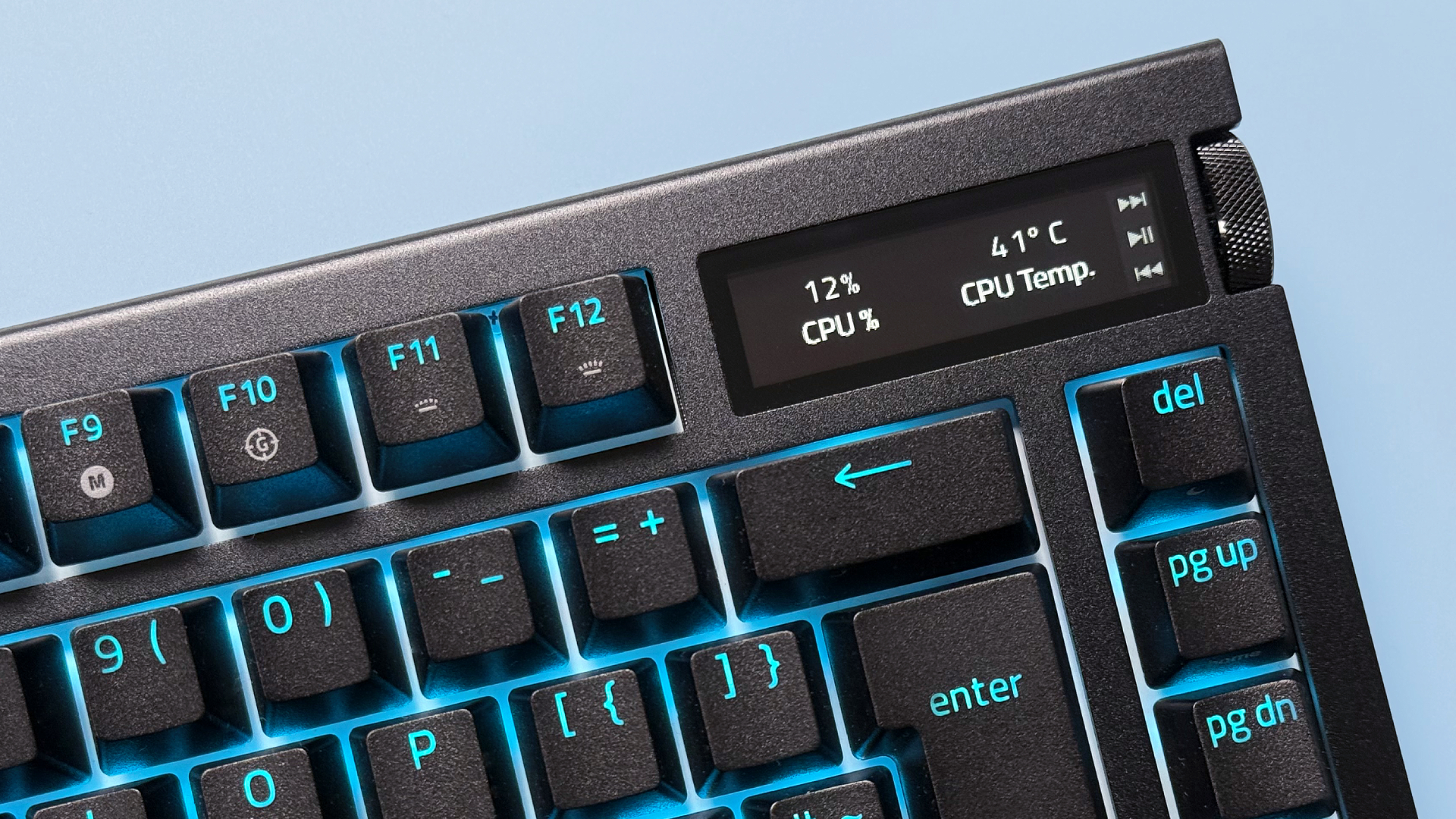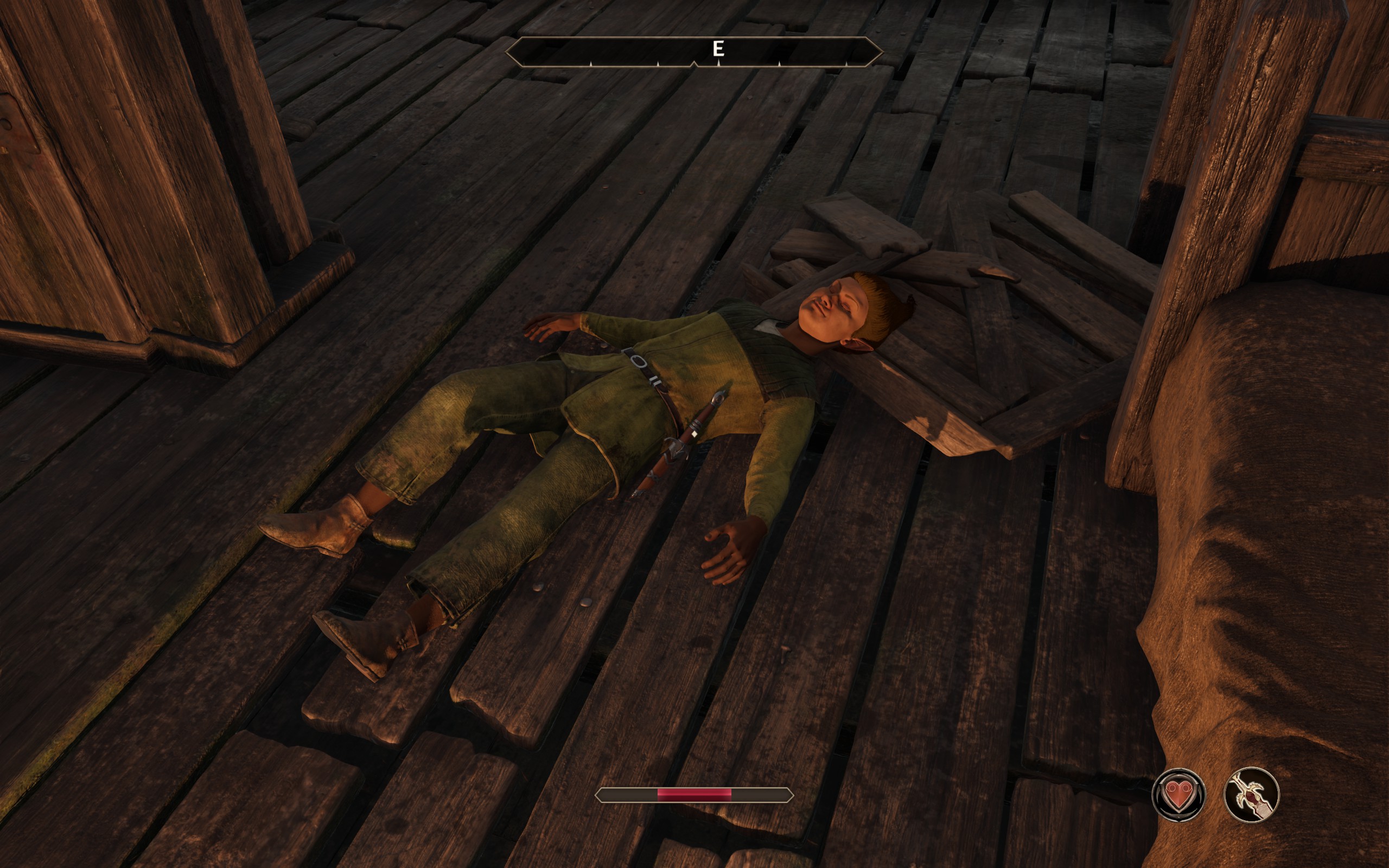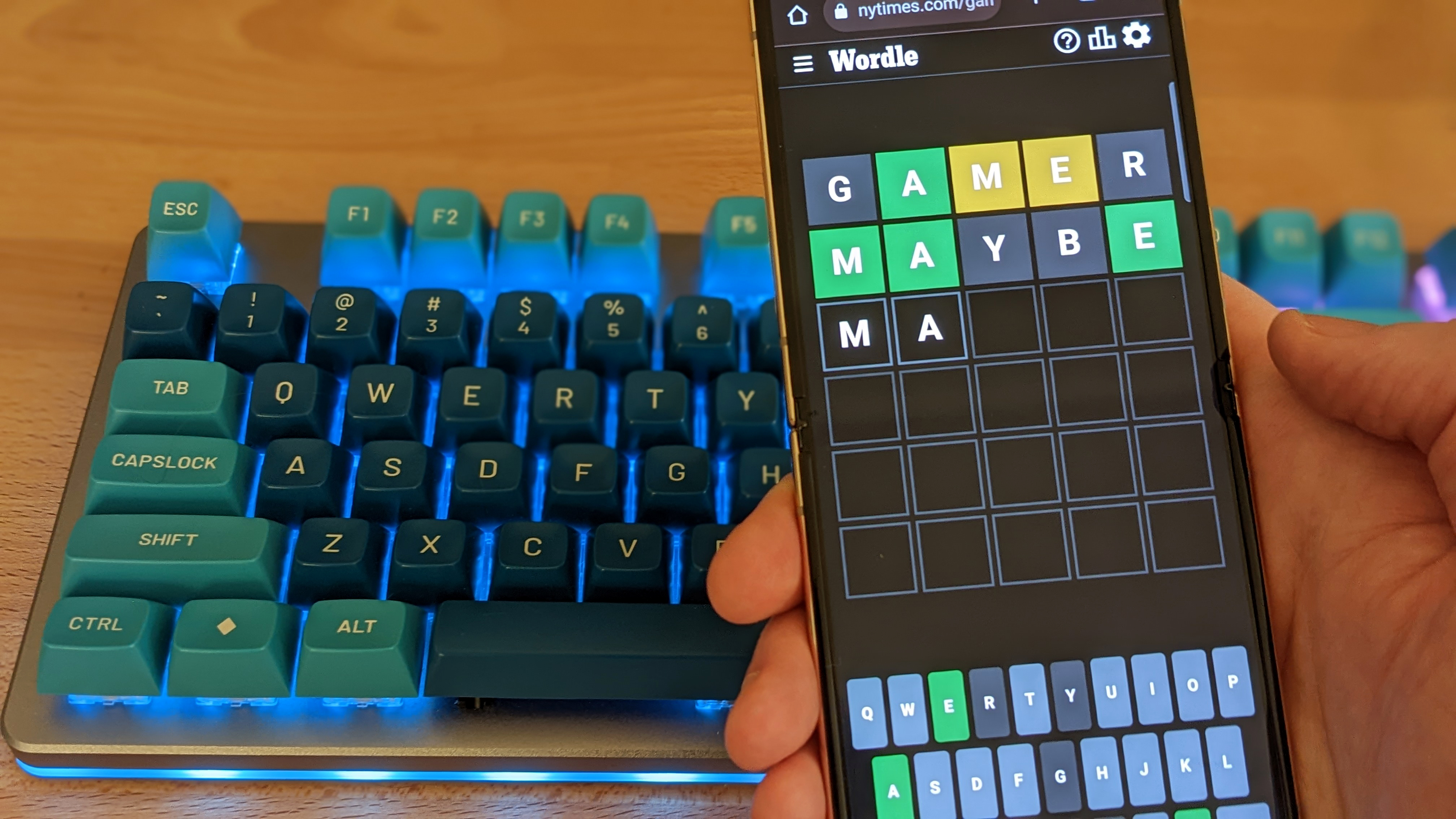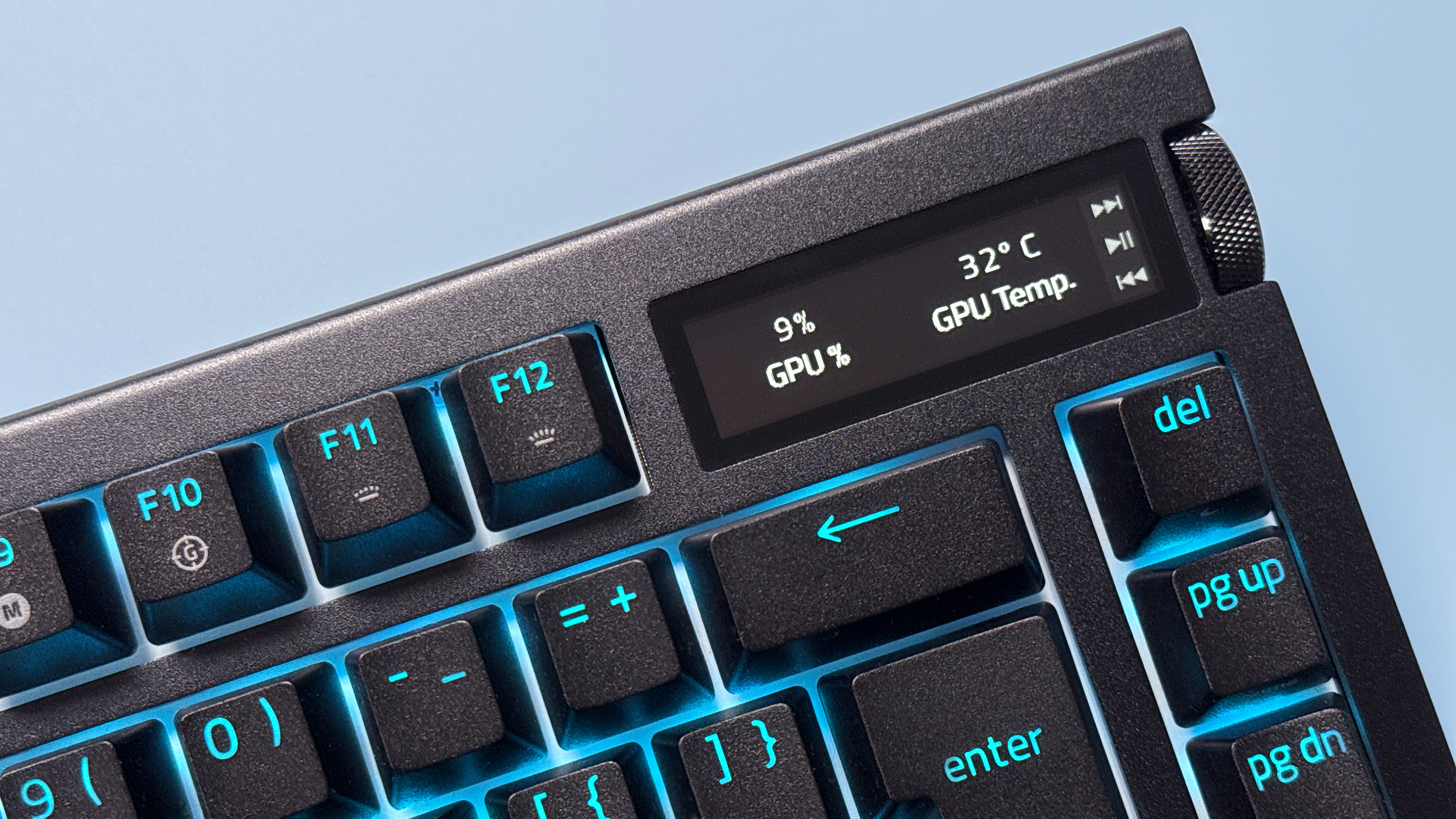
Paying the price for top-tier typing.
The Razer BlackWidow V4 Pro 75% takes the old V3 Pro model, chops it down into a condensed 75% layout, adds a few interesting extras, and whacks the price up into the stratosphere. The key question is whether it’s worth a significant chunk of your hard-earned cash.
As with any keyboard, the most important aspect is the typing feel, and here the BlackWidow V4 Pro absolutely knocks it out of the park. Razer has used its own third-generation orange tactile switches, and while the fact that this is the only option the board ships with might sound disappointing, these switches are phenomenal.
Using them, I felt like I was typing faster than I had done for years. There’s just enough tactility to satisfy typists, yet they’re fast and light enough to be perfectly formed for gaming. Whether you’re drafting essays or honing your headshots, they’re rapid to the touch and supremely satisfying to type on. The textured PBT keycaps also make each key easy to find by feel, and you can swap out the switches for any three-pin or five-pin alternative, which is a welcome addition.
Gaming also benefits from Razer’s Snap Tap feature, which takes the latest input from two keys without you having to release one of them. It’s handy for strafing, for example – hold D and repeatedly tap A and you’ll move back and forth without you ever needing to let go of the D key.
Typing on this board also sounds great, with a lightweight clacky profile that is very pleasing on the ears. Razer has added two layers of sound-dampening foam to the V4 Pro model, and the payoff is noticeable.
I’m not a huge fan of the 75% layout – 80% is where it’s at for me – but it certainly aids portability. This isn’t exactly the most featherweight of keyboards (it weighs 985g without the cable or wrist rest), but it should be easy enough to fit into a bag.
Razer has added a bunch of premium features to the BlackWidow V4 Pro 75%, and at $300, you’d certainly hope that was the case. You get textured PBT keycaps, an aluminium top case, a built-in OLED display, a comfortable wrist rest (it feels a bit tall at first, but you get used to it) and RGB underglow lighting.
The underglow RGB looks lovely, but there’s a problem: you can’t see it when you’re typing as it’s directly under the keyboard, so it could easily have been left off. That’s not so for the keycap RGB, though, which shines through the PBT caps without an issue.
The problem with all this RGB, though, is that it obliterates the keyboard’s battery life, which was quite shockingly poor in my testing. It wasn’t unusual for me to lose a third of the battery life after only a few hours of usage. Razer’s website says you’ll get up to 2,100 hours of battery life in power saving mode, yet it doesn’t mention what you can expect from regular usage – so I decided to find out.=
Beginning one day at 97%, 14 hours later it was down to just 2%, a startlingly rapid decline. This was using Bluetooth mode – in 2.4GHz mode, the board burned through 87% of its juice in just under nine hours. You shouldn’t expect anywhere near 2,100 hours in normal usage, and it’s clear why Razer didn’t feel like talking about regular battery consumption. This keyboard is wireless on paper, but with such prodigious battery drain, you’re essentially forced into using it as a wired keyboard most of the time.
✅ You love tactile switches: This keyboard feels incredible to type on, and if it’s not quite right for you, you can swap in different switches instead.
✅ You want something portable: The 75% layout makes this keyboard ideal for popping into a bag when you’re traveling.
✅ You need a soft, comfy wrist rest: I was sceptical of the wrist rest at first – it puffs up pretty high – but soon grew to really appreciate it.
❌ You’re on a budget: $300 is a huge price to pay for a keyboard, pushing it out of reach for many buyers.
❌ You’re sick of charging up wireless keyboards: This board chews through battery life like there’s no tomorrow. If you use it wirelessly, you’ll need to charge it every day.
❌You want a non-tactile switch option: Sure, you can swap in your own switches, but it would be nice to have more than one choice at checkout.
There are problems elsewhere. For one thing, there’s that $300 price tag, which is a full $70 higher than the V3 Pro. It’s an awful lot to pay for a keyboard. And while I love the tactile switches inside the board, the BlackWidow V4 Pro 75% can’t be shipped with any other switch options. Sure, its hot-swappable nature means you can add different switches, but that might mean having to buy them separately, which adds to the already considerable cost.
Then there’s the OLED screen, which can display your CPU load and temperature, the mode the keyboard is operating in (wired, Bluetooth, etc) and more. Next to it is a dial that can be turned to adjust things like volume and backlighting brightness. The display is fine, but I didn’t find myself using it much. While it comes with a few options, the default one is a flying spaceship that quickly gets distracting – I had to change it almost right away.
Ironically, the two biggest faults – the OLED display and the battery life drain in wireless mode – are the two things differentiating the V4 Pro from the wired BlackWidow V4 75% … which costs $190. It might be worth considering that board before you pull the trigger on the V4 Pro 75%.
Still, it’s hard to be too critical when the typing experience is so supremely satisfying. Ultimately, deciding on this keyboard depends on your priorities – whether a fantastic tactile typing feel outweighs the frustratingly short battery life – and whether you want to pony up the $300 asking price.


